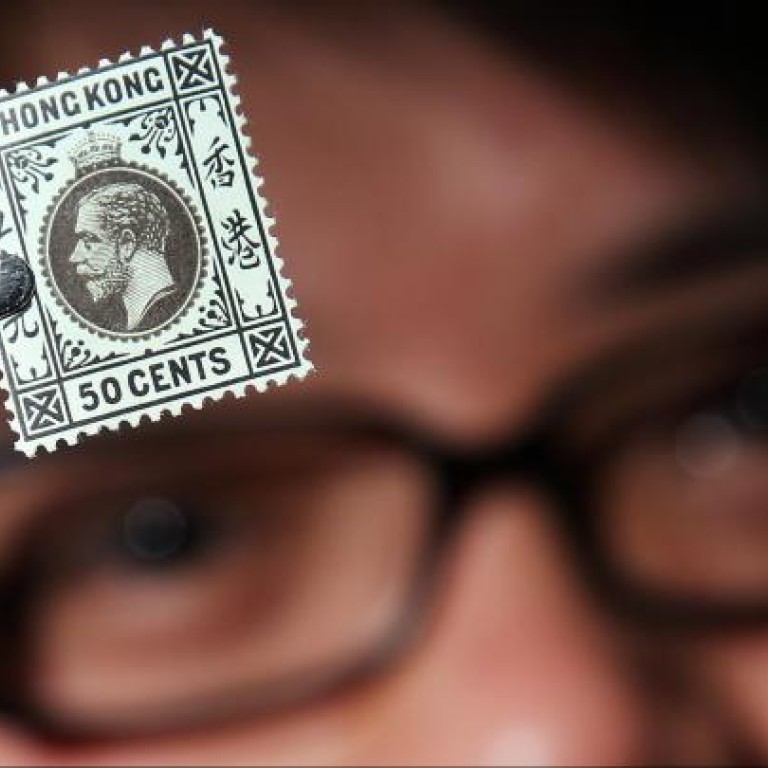
Ask Melanie: Investing in stamps
It's easy to be seduced by stamps. They can be bold, beautiful and cryptic. They can be loaded with historic, cultural meaning and value; they represent the most expensive commodity on earth by weight, leaving gold, platinum and plutonium for dead. Sweden's "Treskilling" Yellow from 1855 at just 0.03 grams, is thought to be the most valuable thing in existence by weight and volume - it last sold at auction in 2010 for more than US$2.3 million.
While rare stamps can sell for many millions, there's a highly covetable bracket that starts from around HK$1 million. These are followed by a range of very respectable collectibles that can be yours from about HK$100,000.
Stamp values, like any asset, are driven by supply and demand and these are at their unbalanced best in the rare stamp universe. There are simply not enough investment-worthy stamps to satisfy new money and new desires emerging in places like China, India and Brazil. China is estimated to have 18 million potential collectors. Current and expected future demand has helped spur prices, even in 2008 as prices for stocks and bonds plummeted.
Stanley Gibbons, kingpin dealers since soon after the birth of modern stamp life in the 1840s, earns cachet as philatelist to the British royal family. More importantly, it maintains the serious collector's bible of stock and trade prices.
This has enabled it to launch and back-test several indices including the Bloomberg-listed GB30 Rare Stamps Index and the GB250 Rarities Index which are updated monthly. These indicate that average values have never fallen and compound annual growth has been around 10 to 11 per cent per annum over 50-year and 10-year periods for each index, respectively.
Meanwhile, its China Rare Stamp Index charts averaged annual returns of 51 per cent over the past 5-1/2 years. This index includes the delightful 1980 8-fen Year of the Monkey stamp in red, gold and black. It was the first Lunar New Year stamp issued by the PRC, and its subject, colours and numbers make it a triple confection for collectors.
Rarity, condition, theme and anticipated future popularity all add to the value of a stamp. The international market is mature and established, although not regulated. Hobby collecting, serious philatelic study and commodity investing are three separate and intertwining branches within it.
As a beginner you need to consider authenticity, quality, storage arrangements, costs, market transparency (which cuts both ways) and trends. That's in addition to assessing your personal needs in relation to income, liquidity, investment time frame, flexibility and concentration risk. Tax may also be an issue.
Bond fund guru and serious rare stamp collector Bill Gross pronounced stamps "better than the stock market". In 2007, he sold his British collection for more than HK$120 million, realising a 22.75 per cent per annum return over seven years. He applies the same approach to investing in stamps as he does to buying bonds, devoting hours to study complemented by advisory and acquisition services from at least two trusted experts.
Some dealers have developed sophisticated investment services for collectors, providing not just advice, handling and storage, but also tailor-made portfolios that collectors can save into regularly. These facilitate entry into the market even for those wanting to test the waters with relatively small sums. Factor in the cost of such services.
If your core wealth is invested in traditional asset classes, consider investing up to 5 per cent, initially, in collectibles including your stamp portfolio. I'm a keen, if circumspect, advocate of investing in tangible assets that diversify a portfolio. All the more when they bring pleasure and satisfaction in themselves.
The views presented are of a general nature. For specific advice, talk to a professional planner. See the column archive at scmp.com/askmelanie

